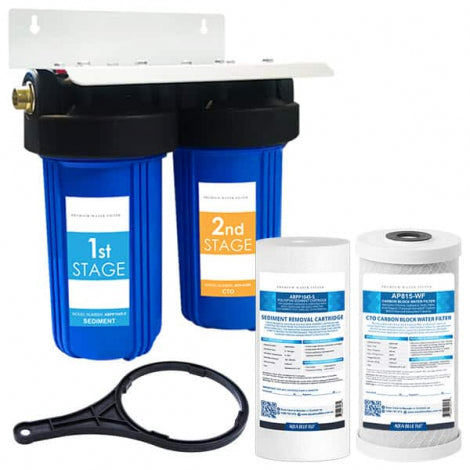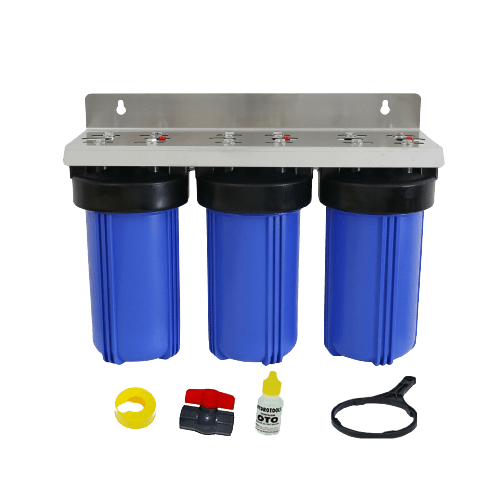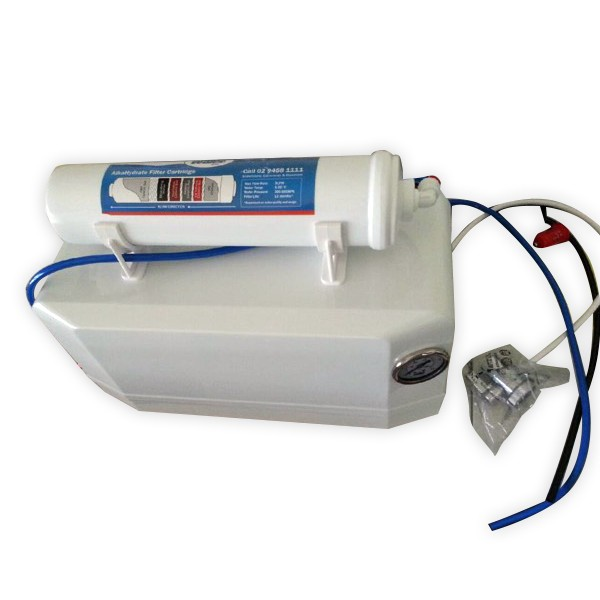Great Awesome Deals! Fast Shipping Across Australia!
Menu
-
-
Water Coolers
-
Water Filters & Purifiers
-
Water Filter System
-
Water Chiller
- Water Bottle
- Benchtop Water Purifier
- Water Distiller
- Replacement Water Filter Cartridges Guide
-
Locations
- Awesome Water Filters in Adelaide
- Awesome Water Filters in Darwin
- Awesome Water Filters in Hobart
- Awesome Water Filters in Brisbane
- Awesome Water Filters in Gold Coast
- Awesome Water Filters in Wollongong
- Awesome Water Filters in Sydney
- Awesome Water Filters in Melbourne
- Awesome Water Filters in Perth
- Awesome Water Filters in Canberra
-
- 1-800-789-781
- Login

Great Awesome Deals! Fast Shipping Across Australia!
Whole House Water Filter: All You Need to Know
August 13, 2021 8 min read

The importance of clean water in your healing process cannot be overstated. The majority of people today consume chlorine-treated water, which still contains various hazardous bacteria, chemicals, and other toxins. Water, like oxygen, is necessary for life to exist. Because water makes up more than 70% of the human body, everyone needs to drink enough water every day to function properly. A whole house water filter can be the best option! For drinking, showering, and cooking, use a home water filtration system.
WHOLE HOUSE WATER FILTER
A point-of-entry tap, sometimes known as a whole house water filter, is a system installed where your main water line enters your home. It can aid in removing impurities from your water, such as iron, chlorine, sulfur, and so much more. Every tap in your home has cleaner water, thanks to whole-house water filters. It means you may use filtered water to wash your dishes, make a coffee, shower, do laundry, and brush your teeth throughout your home.
HOW IT WORKS
Before it reaches your faucet, water has to travel a long way. It starts from a natural source, such as a lake, river, or ground. Then, it runs through the earth to a treatment facility. Water can pick up dirt, particles, and other impurities along the route, causing it to become hard, smell terrible, and taste awful.
While the processed and treated water at the treatment center before being distributed to your home, not everything is removed. It’s true, particularly as new pollutants such as pesticides, PFOS, and PFOA have a significant effect on our water sources. Also, many treatment centers may not eliminate some of these contaminants. Furthermore, due to aging infrastructure and old lead piping, water can pick up extra toxins When it makes its way from treatment facilities to your home. A whole-house filter can aid in this situation.
Is your water sourced from a well? A whole-home water filter can help with dirt, silt, clay, and other types of particles found in well water.
A whole house filtration system is more than just a water filter for your faucet; it helps transform hard or problematic water into cleaner, safer water that is better for your entire home and your loved ones.
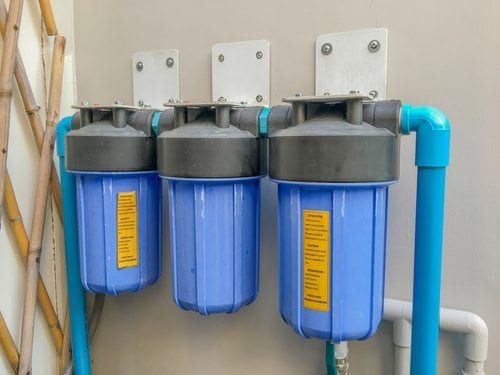
STANDARD THREE-STAGE PROCESS
Pre-Filter Stage
This step is for removing bigger particulates and pollutants from your water. Impurities like sediment and silt are common examples. Sediment-filled water can harm your pipes and appliances over time, but this filter can trap these unwelcome contaminants. Make sure you don’t forget about your pre-filter. Experts suggest replacing it every 2-3 months to keep your filtration system in top shape.
Activated Carbon Stage
It reduces chlorine and chloramines at the next step of filtering. For an added layer of protection, activated carbon binds and eliminates harmful toxins from your water.
Post-Filter Stage
The post-filter will pass through any pollutants left in your water. Before your water reaches your taps, this stage helps to remove any remaining sediment and impurities. For best results, we recommend changing your post-filter every 6-12 months.
INSTALLING A WHOLE HOUSE WATER FILTER
Installing a whole house water filter is relatively simple, and many whole house water systems include low-cost or even free installation when purchased. Basing on the complexity and size of the system, each water filter for your home will be unique. The majority, however, may use an install kit and the seven procedures outlined below.
- Decide where you want your filter to be.
- Turn off the water main and allow the system to drain.
- Disconnect your pipes and replace the shutoff valve.
- Install your filter’s new fittings.
- Secure your fittings and install your filter.
- Reconnect your water supply and inspect for leakage.
- If necessary, replace the filter cartridges.
THINGS YOU NEED TO KNOW IF BUYING A WHOLE HOUSE WATER FILTER
Carbon-Based Water Filter
If you choose a carbon-based whole-house filter, you must first determine whether you have disinfected water with chlorine or chloramines. Why?
It’s because most whole-house carbon filters intend to remove chlorine but not chloramines. If your water provider utilizes chloramines, you’ll need a filter specifically for getting rid of them.
So, how do you find out whether your water department disinfects with chlorine or chloramines?
It’s simple. Look up your local water department’s water quality report on the internet. If you can see chlorine in the report, you should look for a chlorine-removing whole-house filter. On the other hand, if chloramines are listed, you’ll need to find a whole-house chloramine-removal system.
Don’t skip this step because chloramines are also a disinfectant in 20% of water systems, and the improper filter will do you no good!
Find Out If Water is Tested
When shopping for a Whole House filter, be sure it has been tested by a certified third-party lab or is NSF certified.
You should also read the results of the water quality test. Because not all filters, even those built with the same material, are equally effective, you shouldn’t assume that all carbon-based whole-house systems remove the same toxins.
The report will reveal whether the filter removes 99 percent or 50 percent of each water contaminant. Clearly, the higher the rate of removal, the better.
Know The Best Solution
Finally, you should be aware that a carbon-based whole-house filter is not ideal for guaranteeing the purest possible drinking water. As a result, you may have to install a separate drinking water filter.
You might think this is insane, but it makes sense.
It’s all about filtration and water movement. With a carbon-based filter, the higher the water flow, the less filtration is possible. When comparing the number of contaminants removed by a carbon whole house water filter to a drinking water filter, the drinking water filter can remove much more (in some cases 10 times more).
Even though whole house filters use a carbon/activated carbon filter, a significant component of most drinking water filters, there is one important distinction. Whole-house filters must treat all water entering your home without significantly obstructing water flow, and they normally have a flow rate of at least 6-7 GPM (gallons per minute).

TYPES OF WHOLE HOUSE WATER FILTER
Reverse Osmosis Filters
If you want cleaned water from all of your household’s water outlets, reverse osmosis whole house water filtration systems are ideal. Reverse osmosis water filters use polarity to filter out anything that isn’t pure water molecules. These filters are not suggested as drinking water filters since reverse osmosis removes minerals from the water, but they are excellent for whole-house use and cleaning.
- Clean water goes to all of your household’s needs, including drinking, cooking, showering, bathing, and cleaning.
- Reduces the risk of inhaling hazardous water disinfectant chemicals in the air
- The use of drinking water filters at the tap is no longer necessary.
Carbon-Based Filters
Carbon water filters are among the most preferred whole-house water filters because they require less maintenance. They’re less expensive than other options and are more environmentally friendly. Carbon-based whole-house water filters are best for average-sized families since they filter out silt, chlorine, rust, and other traces of metals like copper, mercury, and other dangerous components that would not filter out otherwise.
- Pure chlorine and chloramine-free water go to all household needs, including drinking, cooking, showering, bathing, and cleaning.
- Reduces the risk of inhaling hazardous water disinfectant chemicals in the air
- Filters with a long life span (3+ years) are reasonably worry-free.
- They are a reasonably inexpensive solution to distribute filtered water throughout your home due to the long filter life and lower purchase price.
- It’s the most efficient way to remove chlorine and chloramines from your shower and bath. It does so without the use of separate shower filters.
Next-Generation Technology
A third alternative is to employ Next Generation Technology full house filters. Next-generation whole-house filters outperform carbon filters and can be as effective as RO systems at a fraction of the cost, with no wasted water and no mineral removal.
- Clean water goes to or all of your household’s needs, including drinking, cooking, showering, bathing, and cleaning.
- Reduces the risk of inhaling hazardous water disinfectant chemicals in the air
- The use of drinking water filters at the tap is no longer necessary.
- It doesn’t deplete the water’s essential minerals.
- There isn’t a lot of wastewater produced.
ADVANTAGES OF USING A WHOLE HOUSE WATER FILTRATION
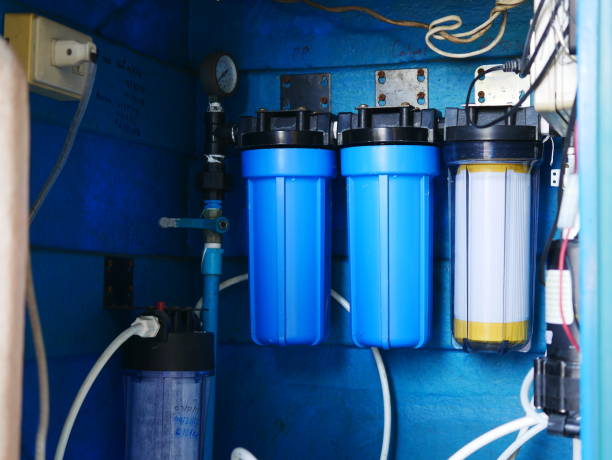
Before we get into the nitty-gritty of filter kinds, recommendations, and maintenance, let’s take a look at some of the benefits that are universal across all water filters, regardless of type, model, or brand.
- Water filters for the entire house are convenient. All water entering your home is filtered at the main water line, so you don’t have to worry about installing separate filters or extra filter extensions.
- Water filters for the entire house save money. You don’t need to change any filters or check for maintenance for every single water spout in your home. It’s a quick and easy one that saves time and money.
- Water that is free of contaminants. Cleaner water from all water sources in the house ensures optimal cleanliness in terms of personal hygiene, which is the most obvious benefit. Cleaner water equates to healthier showers, which in turn equates to healthier skin and hair.
- Softened water. While a whole home filter is not the same as a water softener, it can soften water by removing harsh impurities to a normal level, which has several advantages in and of itself.
CONSIDERATIONS BEFORE BUYING A WHOLE HOUSE WATER FILTRATION
Before selecting a whole home water filter, several crucial elements to consider and external research has to be done, just like with any other household decision. Consider or ask yourself the following questions:
- Do you use all of your home’s water outlets? The answer is usually yes for a typical family in a typical-sized home. If anything else, you might want to think about whether you’ll be able to get the most out of a whole-house water filtration if you don’t use water throughout the house.
- How well does your water treatment/curing system work? What types of pollutants are employed? It’s a crucial factor to examine because the answer will help you determine the filter you require. For example, if you have treated water with chlorine, you’ll need a whole-house water filter that can remove chlorine.
- Test the water’s purity. A whole-house water filter is an investment, so be sure it works before you buy one. To get the most out of your whole house water filter, make sure you hire an expert to install it and make sure you demand water quality tests and reports.
- It isn’t entirely water to drink. It’s critical to understand that the standard and quality of water for household use differs significantly from water filtered using a drinking water filtration system. Whole-house water filters aim to purify water for general usages, such as cleaning rather than drinking. You may install external filters in your water outlets to offer filtered drinking water if you want to drink water from your house line.
FINAL THOUGHTS
To summarize, a whole house water filter is one way to take control of your household’s health and well-being. Investing in a whole-house water filter adds an extra layer of protection that saves time, money and helps you improve your home.
Installing a whole-house water filtration system will provide more than just peace of mind if you’re concerned about the contaminants in your tap water.
At the point of entry, whole-house systems eliminate impurities that pass through both private and public water systems, ensuring that every tap in your home delivers clean, filtered water.
In general, a mixed media system is the best whole-house water filter. These systems can be tailored based on the contents of your home’s water and employ various filter media to target different types of impurities.
Subscribe
Sign up to get the latest on sales, new releases and more …


